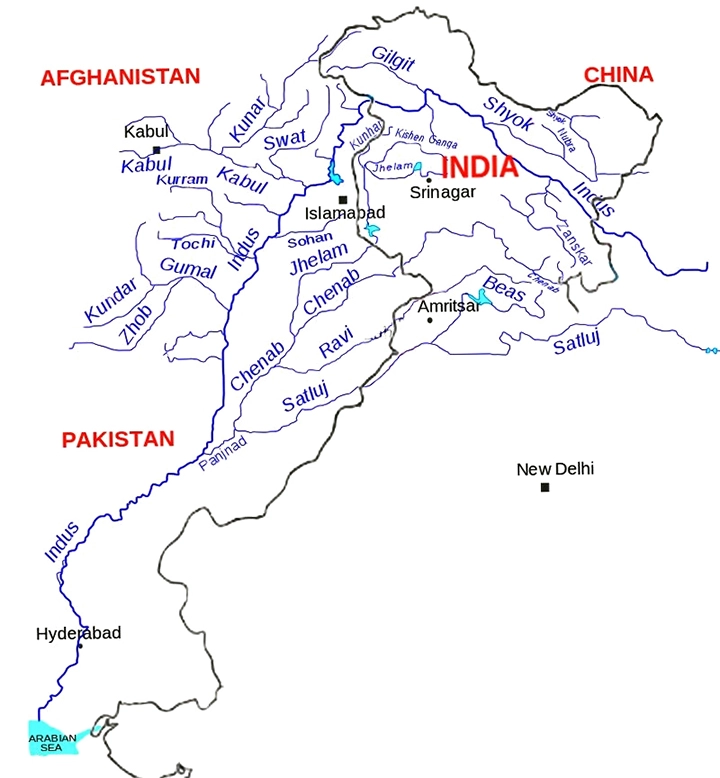CONTENTS
- Armed Forces (Special Powers) Act
- Section 144 CrPC
- Hattis of Himachal Pradesh
- Export Credit Guarantee Corporation of India
- Kwar Hydroelectric Project
Armed Forces (Special Powers) Act
Context:
Recently PM said, In a bid to completely lift the Armed Forces (Special Powers) Act of 1958 from the northeast, efforts are on to improve the law-and-order situation in the region.
Relevance:
GS III- Government Policies and Interventions
Dimensions of the Article:
- Armed Forces Special Powers Act (AFSPA)
- AFSPA Acts in force
- Powers Given to an officer of the Armed Forces in a “disturbed” area under AFSPA
- After being in force for many years, why has AFSPA been withdrawn now?
- Why was AFSPA imposed on the Northeast in the first place?
- Arguments Against AFSPA
- Arguments in Favour of AFSPA
- Important Criticisms of AFSPA and commissions regarding AFSPA
- Supreme Court judgment on AFSPA
Click Here To Read More: Armed Forces (Special Powers) Act
Section 144 CrPC
Context:
Recently, the administration of Uttarakhand’s Haridwar district imposed prohibitory orders under Section 144 of the Code Of Criminal Procedure (CrPC), 1973 near the town of Roorkee.
Relevance:
GS II- Polity and Governance ( Issues Arising Out of Design & Implementation of Policies)
Dimensions of the Article:
- What is Section 144 CrPC?
- Features of Section 144:
- What is the Difference between Section 144 and Curfew?
- Criticism of Section 144
- Courts rulings on Sec 144
Click Here to Read More : Section 144 CrPC
Hattis of Himachal Pradesh
Context:
The Centre is set to consider the Himachal Pradesh government’s request for inclusion of the Hatti community in the list of Scheduled Tribes in the state.
Relevance:
GS II- Polity and Governance
Dimensions of the Article:
- Who are the Hattis?
- Hattis societal norms
Click Here To Read More : Hattis of Himachal Pradesh
Export Credit Guarantee Corporation of India
Context:
ECGC Ltd., the government enterprise that provides export credit insurance, will soon approach the Reserve Bank of India for approval to deal in foreign currency for the benefit of exporters.
Relevance:
GS III- Indian Economy
Dimensions of the Article:
- What is ECGC?
- Functions of ECGC
- Facilities by ECGC
What is ECGC?
- ECGC stands for Export Credit Guarantee Corporation of India Ltd, and it is a government-owned export credit provider situated in Mumbai and owned by the Ministry of Commerce and Industry.
- It assists Indian exporters with export credit insurance.
- The Chairman and Managing Director, who is a central government civil servant in the ITS cadre, is the company’s highest-ranking official.
- In July 1957, the Government of India established the Export Risks Insurance Corporation (ERIC).
- In 1964, it was renamed Export Credit and Guarantee Corporation Limited (ECGC), and in 1983, it was renamed Export Credit Guarantee Corporation of India.
Functions of ECGC
- The ECGC offers exporters a variety of credit risk insurance products to protect them against losses in the export of goods and services.
- It provides bank and financial institution guarantees, allowing exporters to receive better terms from them.
- It offers Overseas Investment Insurance to Indian enterprises who invest in foreign joint ventures in the form of stock, loan, or loans.
Facilities by ECGC
- It offers insurance protection to exporters against payment risks.
- It provides guidance in export-related activities.
- It makes available information on different countries with its own credit ratings.
- It makes it easy to obtain export finance from banks/financial institutions.
- It assists exporters in recovering bad debt.
- It provides information on the creditworthiness of overseas buyers.
-Source: The Hindu
Kwar Hydroelectric Project
Context:
The Cabinet Committee on Economic Affairs (CCEA) has approved the 540-megawatt Kwar hydroelectric project on the Chenab in Kishtwar district of Jammu and Kashmir.
Relevance:
GS III- Indian Economy (Infrastructure)
Dimensions of the Article:
- What is the Kwar Project?
- Chenab River
What is the Kwar Project?
- This project, which is part of the Indus basin, is one of at least four planned in the district, including the 1,000 MW Pakal Dul hydroelectric project and the 624 MW run-of-river Kiru hydroelectric project.
- The Indus Water Treaty (IWT) between India and Pakistan, signed in 1960, divides the waters of six Indus basin rivers that flow through India and into Pakistan.
- India has entire control over the Sutlej, Beas, and Ravi rivers in the east, while Pakistan controls the Chenab, Jhelum, and Indus rivers in the west.
- Chenab Valley Power Projects Private Ltd (CVPPL), a joint venture between NHPC Ltd and Jammu & Kashmir State Power Development Corporation, will develop the Kwar project (JKSPDC).
- In a 90 percent dependable year, the project is estimated to produce 1975.54 million units.
- Approximately 2,500 people would be employed directly and indirectly as a result of the Project’s construction activities.
Chenab River

- It rises in the Himachal Pradesh state’s Lahaul and Spiti district in the upper Himalayas.
- The river is produced by the confluence of two rivers, Chandra and Bhaga, near Tandi, in the Lahaul and Spiti district, 8 kilometres southwest of Keylong.
- Surya taal lake, located a few kilometres west of the Bara-lacha la pass in Himachal Pradesh, is the source of the Bhaga river.
- The Chandra river rises from the same glaciers east of the pass (near Chandra Taal).
- It flows through the Jammu region of Jammu and Kashmir and into the Punjab plains of Pakistan before entering the Indus River.
-Source: The Hindu




